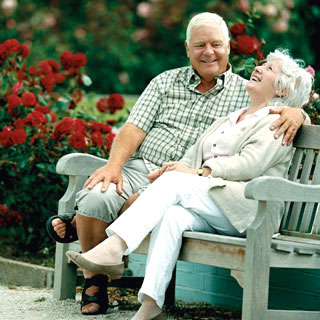
Green spaces are good for the frailty status of older adults, according to a study published in the latest issue of JAMDA: The Journal of Post-Acute and Long-Term Care Medicine. The authors hope the study will encourage the use of green spaces to promote health and prevent frailty in such populations.
Researchers in Hong Kong measured the frailty status of 4,000 study participants aged 65 or more years, as well as the amount of green space/vegetation around their residences, then followed up with participants two years later; complete follow-up data were available for 3,240 participants. The frailty status of older adults living in neighborhoods with more than 34% green space at baseline was more likely to have improved over the time period, they found.
“Green space is now viewed as an important part of neighborhoods that support healthy and active lifestyles; it is therefore plausible that individuals living in neighborhoods with more green space have a lower risk of frailty,” they wrote.”
Other factors likely are in play as well, the investigators said. Previous research has shown that green space can promote cognitive functions and that green space is associated with reduced air pollution, for instance, they said. More research is needed to understand which characteristics of green space have the strongest influence on frailty, the authors said.
The researchers also found a stronger association between green space and frailty risk among men than among women.
“Possible explanations for the gender differences in the green space and health relationship are gender differences in the usage of green space,” they wrote. “Although we did not collect any information regarding the usage of green space, our supplementary analysis revealed that men had a higher level of physical activity and were more likely than women to have spent their leisure time outdoors (walking and gardening) … and therefore benefit more from green space than women do.”
McKnight’s Senior Living previously reported on a 2017 study that found that access to outdoor areas could improve the symptoms of depression among assisted living and nursing home residents. Locked doors, uneven foot paths, steep steps and needing permission or assistance to go outside often prevented access, however, the researchers, from the University of Warwick in the United Kingdom, found.
The authors of a separate 2016 literature review said that spending time outdoors can improve one’s mind, body and spirit, reducing mobility issues, isolation, activities of daily living and physical therapy needs, depression and cognitive impairment.
“Nearby nature” benefits all ages, but the positive health effects often are greater for older adults, said Kathleen Wolf, Ph.D., a research social scientist at the University of Washington, Seattle, and Elizabeth Housley, founder, social scientist and senior project manager with the Seattle-based consulting firm Our Future Environment.
New retirees can benefit from activities such as gardening and strolls, but adults aged more than 85 years may be limited to their immediate neighborhoods due to mobility or other health issues, so having nature nearby is even more important for them, they said.
That same year, researchers behind a study by nonprofit research organization RAND Corp. suggested that walking loops and classes geared toward adults could attract more older users to neighborhood parks across the United States, which primarily offer activities that are geared toward younger people.



